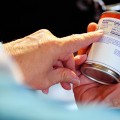Winterize to Stay Healthy with Diabetes
If you live in a part of the country where winter is a fact of life, you are probably used to getting yourself ready for cold weather. You make sure that the storm windows are in place, the furnace is working, your car has snow tires and antifreeze, and you get out your gloves and warm coat. Have you ever thought of winterizing your diabetes? A recent study presented at the American Diabetes Association (ADA) scientific meetings showed that A1C levels (a measure of long-term blood glucose levels) are higher in the winter. In all climates, levels were highest February through April and were lowest August through September. The people who had the greatest rise in blood glucose were those who lived in moderate climates, where winter temperatures range between 32 and 40 degrees. People who lived in the coldest parts of the country didn’t see their blood glucose levels go as high, perhaps because it is so cold that they spend very little time outside.
Scientists don’t really know why this happens. It was not related to how people manage their diabetes, since heart attacks and strokes also are more common during the winter months. It is thought that cold weather causes a rise in blood pressure and heart rate, but no one really knows why. This same physical response may be the cause of the increase in blood glucose levels, as well.
DIABETES AND THE HOLIDAYS
The holidays come right in the middle of winter and can affect how you are able to care for your diabetes. It is a busy time, high-calorie foods are everywhere, and many people feel stressed and even depressed. All of these can limit your ability to stay healthy with diabetes. It often helps to make a plan for handling each holiday or event. You may decide to just enjoy yourself and make up for it another day. You may decide to stick as closely as possible to your plan or you may decide to exercise more to make up for the extra food. No matter what choice you make, you will feel better about yourself if you know ahead of time what you want to do.
WINTER AND DIABETES
Use caution when exercising in very cold weather. Since heart attacks and strokes are more likely to occur in the winter, talk with your health care provider about what is safe for you. Shoveling snow might be best left to others. Your skin also needs extra care in the winter. Cold weather and forced air heat can be very drying to your skin. Using lotion will help to keep your skin from becoming dry and cracked. Cracked skin gives bacteria an easy way to enter and cause an infection. This is especially true for your feet and legs. Keeping your feet warm can be hard if the blood flow to your legs and feet has been affected by diabetes. Well-fitting, waterproof boots and cotton or wool socks will help keep your feet warm and dry when you are outdoors. Hot water bottles or heating pads are not recommended because they can cause burns if you have lost feeling in your feet due to nerve damage.
It seems like everyone you meet in the winter has a cold or the flu. Protect yourself by getting a flu shot every fall. If you haven’t had a pneumonia shot, remind your health care provider that people with diabetes need this injection at least once in their lifetimes. Since most of us don’t get through the winter without catching one bug or another, talk with your diabetes educator or provider about how to handle your diabetes care during an illness.











